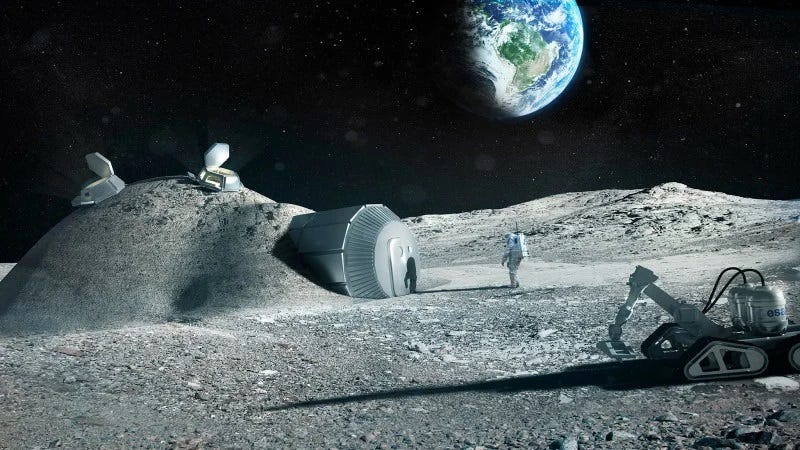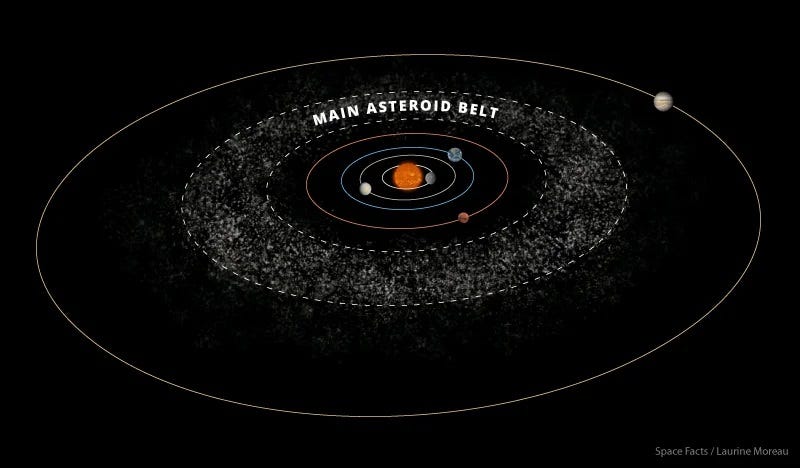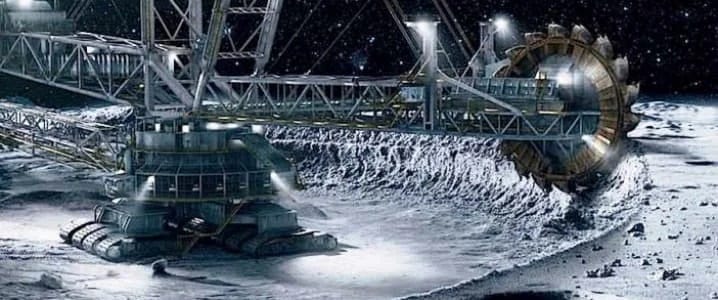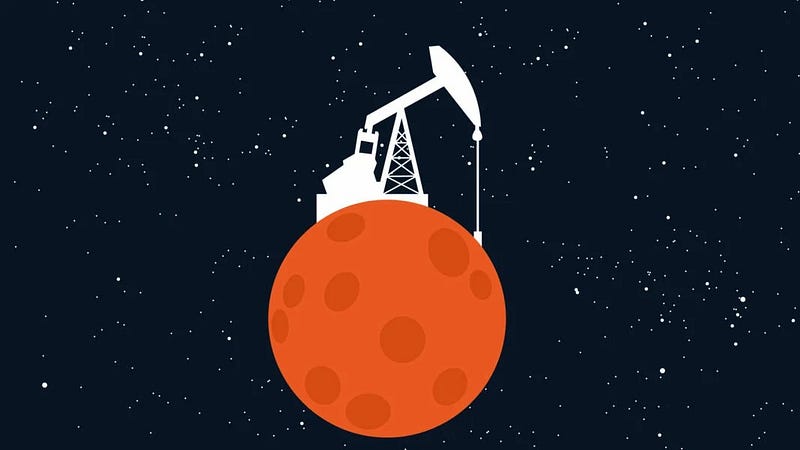Exploring the Viability of Asteroid Mining in Modern Science
Written on
Chapter 1: Understanding Asteroid Mining
Asteroid mining has captured the imagination of many, often appearing in science fiction, video games, and discussions among futurists. But how feasible is it to extract minerals from space today?

The first aspect to consider is the physics involved in space travel. Mining machinery is not only costly but also significantly heavy, with typical rigs weighing several tons. Given that we are deep within Earth's gravitational well, lifting cargo from the surface to even low-Earth orbit requires substantial energy.
The Saturn V rocket, which was pivotal for lunar missions, stands as the most powerful launch vehicle ever created, weighing around 3,000 tons and capable of transporting only 150 tons (less than 5% of its total mass) into low-Earth orbit. Its lunar payload capacity is even less, at 50 tons.

If we consider dispatching equipment to the asteroid belt using a rocket of this size, the payload capacity diminishes even further due to the increased fuel requirements. Tsiolkovsky’s rocket equation complicates matters; merely building a larger rocket does not proportionally increase the payload it can carry. The additional fuel required to launch extra weight further complicates matters.
However, one solution could involve sending components to low-Earth orbit through multiple launches to construct a larger spacecraft designed for asteroid travel. The asteroid belt itself lies between Mars and Jupiter, approximately 2.2 to 3.2 astronomical units (AU) from the Sun, with one AU being the distance from Earth to the Sun, roughly 150 million kilometers.
The nearest edge of the asteroid belt is about 1.2 AU away (around 180 million kilometers), but reaching the target asteroid typically requires traveling even farther. Given the shifting positions of the Earth and the asteroids, the journey could span anywhere from nine months to several years.

This extended travel time necessitates a large spacecraft capable of supporting not just a crew, but also life support systems and ample supplies of food and water for long durations.

Currently, the technology to deploy a robotic mining station capable of autonomously locating mineral deposits, extracting them, and transporting them back to Earth is not yet feasible. Creating such a robot is likely more complex than simply sending human crews into space.
Once we arrive in the asteroid belt, choosing which asteroid to target is another challenge. The average distance between asteroids is about one million kilometers, and less than 1% of them have been studied in any detail. While we know the orbits of larger asteroids, our understanding of them is largely superficial.
Finding mineral deposits in the asteroid belt requires extensive geological exploration, akin to searching for resources on Earth rather than simply drilling at random.

Assuming we manage to locate valuable minerals like gold and extract a significant quantity, the process of refining the ore poses additional challenges. On Earth, specialized equipment is required for this enrichment process, and transporting such machinery would add considerable weight to the spacecraft, further escalating launch costs.
Let's suppose we successfully retrieve 100 tons of gold. Currently priced at around $42,000 per kilogram, introducing that amount of gold into the market could halve its value if supply dramatically increases. The cost of launching 2,000 tons into orbit would be approximately $40–60 billion, while the potential revenue from the gold could be around $4–5 billion, not accounting for the expenses of the mission itself.
Thus, with today's technology, asteroid mining appears economically unfeasible.
Chapter 2: Conditions for Viable Asteroid Mining
To make asteroid mining a realistic endeavor, several conditions would need to be met:
The first condition is the development of cost-effective methods to transport cargo into orbit, such as a space elevator. This could significantly reduce mission costs.
The second involves discovering new, more efficient propulsion technologies that allow for better acceleration without the limitations of traditional rocket engines.
Lastly, the identification of minerals that are either difficult to obtain on Earth or are urgently needed could provide a compelling reason to pursue mining in space. For example, helium-3 is abundant on the Moon but is not currently needed in large quantities on Earth, which has limited interest in its extraction.
In conclusion, while the concept of asteroid mining is enticing, substantial advancements in technology and economics are necessary before it can become a viable reality.
If you find this exploration of space mining intriguing, consider subscribing for more insights and updates. Your support enables us to continue creating quality content on these fascinating topics.